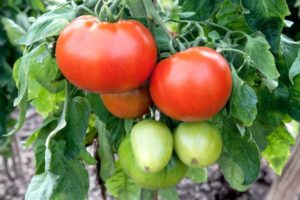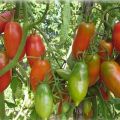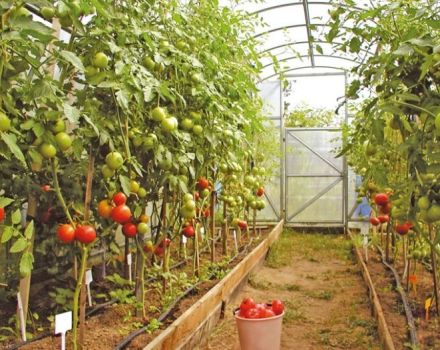Description of the Alhambra tomato variety, features of growing and care
The Alhambra tomato is a high-yielding hybrid, bearing large fruits of good commercial quality. In addition to this, the variety has a high immunity to dangerous diseases of the vegetable crop.
Description
Large-fruited early ripening hybrid. From the moment the shoots appear to the onset of fruiting, 110-115 days pass. The plant is indeterminate. Inflorescences form over 9-10 leaves and are repeated every 3 subsequent ones. The brush consists of 4–6 fruits.
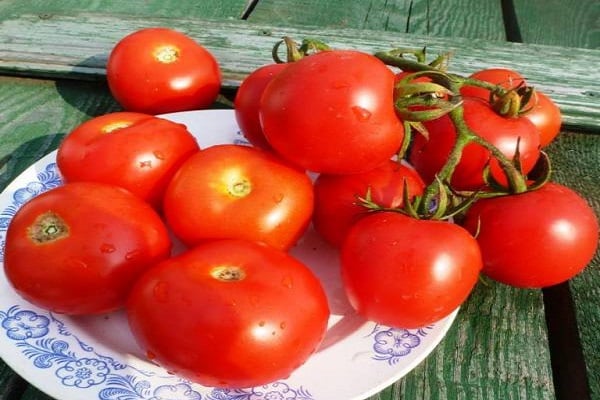
Flat-round tomatoes are covered with a dense glossy skin. The number of seed chambers is 4–5. The pulp is juicy, fleshy. The taste is pleasant, sweetish. The color of freshly set fruits is light green, and ripe ones are bright red. The peduncle has no spots.
The fruits are tolerant to top rot. Thanks to their strong skin, tomatoes do not crack, they tolerate long-term transportation well and are stored without losses for about 3-4 weeks. Tomatoes are used for making salads, canned whole fruits, tomato pastes.

Fruits weigh 150–180 g. With proper care and favorable weather conditions, tomatoes grow up to 160–200 g. With proper care, the yield of one bush is 6–6.5 kg.
In the process of crossing, the variety is endowed with high immunity to fusarium, tobacco mosaic, cladosporium. Tomato variety Alhambra f1 is intended for growing in all types of greenhouses. To achieve the maximum possible yield, the hybrid is grown in the second turn.
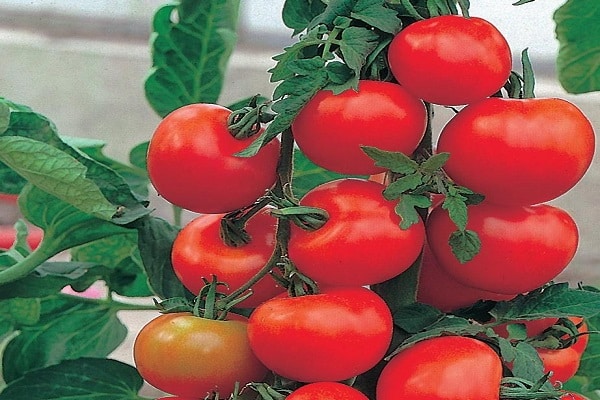
Features of growing and care
Planting seeds of a large-fruited hybrid is carried out in mid-March. To create a greenhouse effect, the seedling container is covered with polyethylene and placed in a warm, lighted place. After the sprouts appear, the shelter is gradually removed and the temperature is lowered to + 18– + 20 ⁰С. Under these conditions, young plants do not stretch. Caring for a tomato variety includes the following garden manipulations:
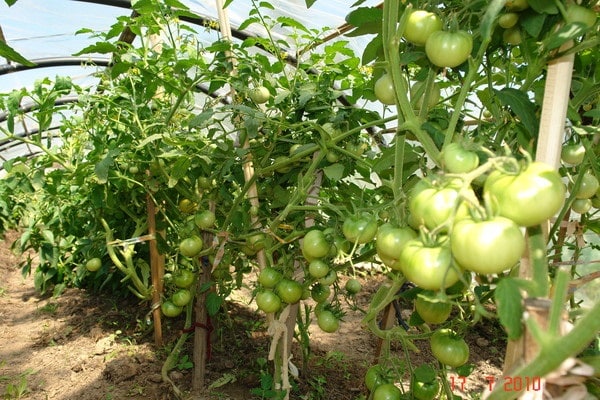
- Watering. So that the tomatoes do not get sick with fungal diseases and rot, the culture should be watered rarely, but abundantly. If the weather is sunny, the bushes are watered 1-2 times a week. In order to reduce humidity, the greenhouse is ventilated from time to time.
- Picking. From a large seedling capacity, young plants are transplanted into separate pots after the formation of the first true leaf. In a greenhouse that does not have a heating system, tomatoes are planted when they reach 45 days after the risk of severe May frosts disappears. Planting scheme - 40 × 50 cm.
- Shaping and garter. Despite the fact that the description contains information about the strong structure of the hand, the number of fruits on the lowest of them is normalized: 4 pieces are left on the first, and 4–5 on the next. Pegs or vertical trellises are installed near the bushes that have taken root in a permanent place.
- Top dressing.Growing tomato varieties can be ineffective without the correct feeding scheme. The first time the seedlings are fed with a solution of mullein (1: 8) or chicken droppings (1:10). The next top dressing two dressings are carried out with an interval of 10-14 days. As the first fertilizer, a solution is used, for the preparation of which potassium sulfate (10 g), ammonium nitrate (15 g) are stirred in a bucket of water. The mixture for the third feeding consists of a bucket of water, 15 g of ammonium nitrate and potassium chloride, 20 g of superphosphate. Adult bushes are pampered with organic fertilizers or solutions based on nitrate, potassium and superphosphate.

Reviews
The opinions about the hybrid are only positive, which fully confirms the characteristics declared by the manufacturer. Gardeners rejoice at high yields and pleasant fruit taste. The main plus for most farmers is a sturdy brush that can handle large tomatoes on its own.
Have you grown the Alhambra? Are the expectations for the yield confirmed? Please leave reviews so other gardeners can enjoy the delicious tomatoes.

